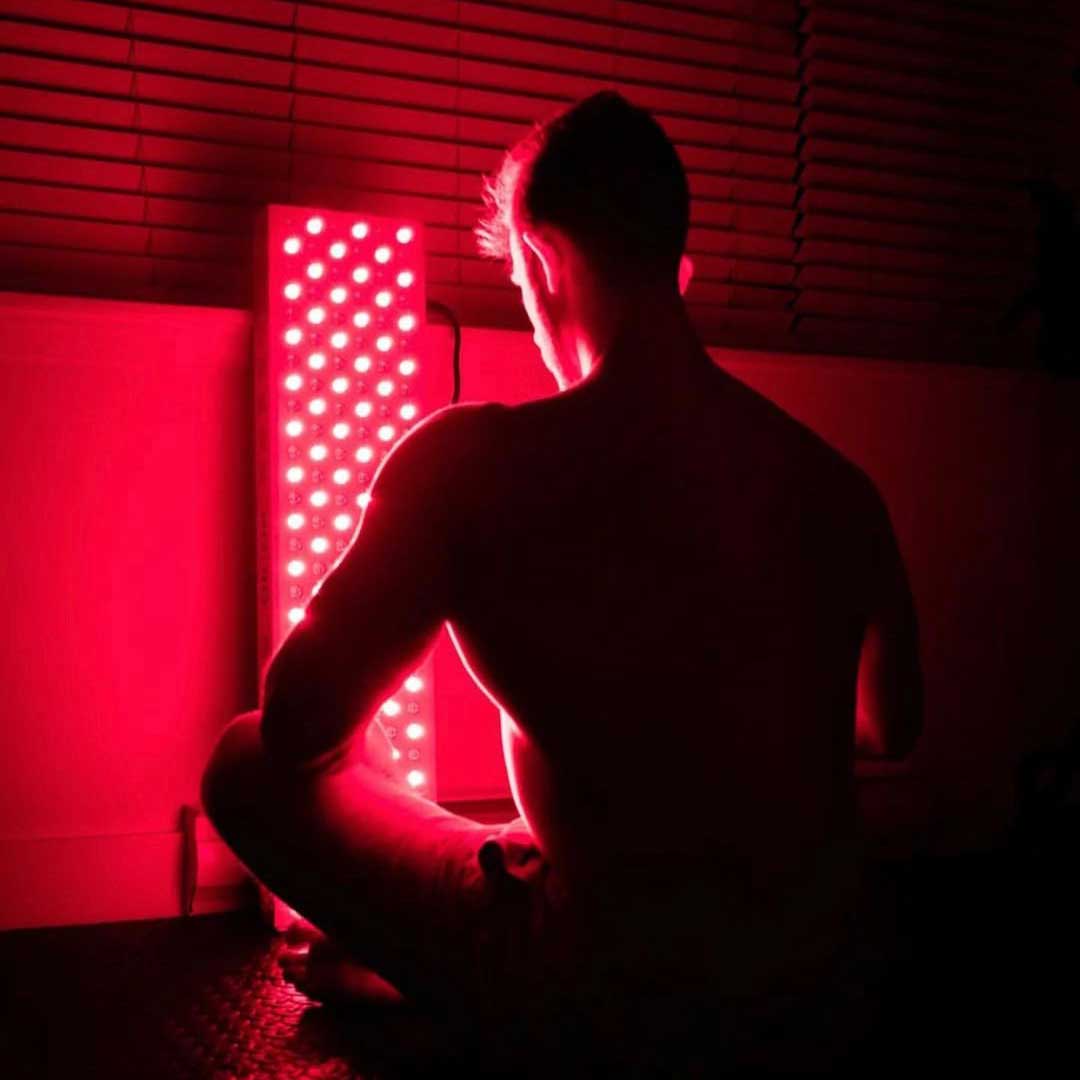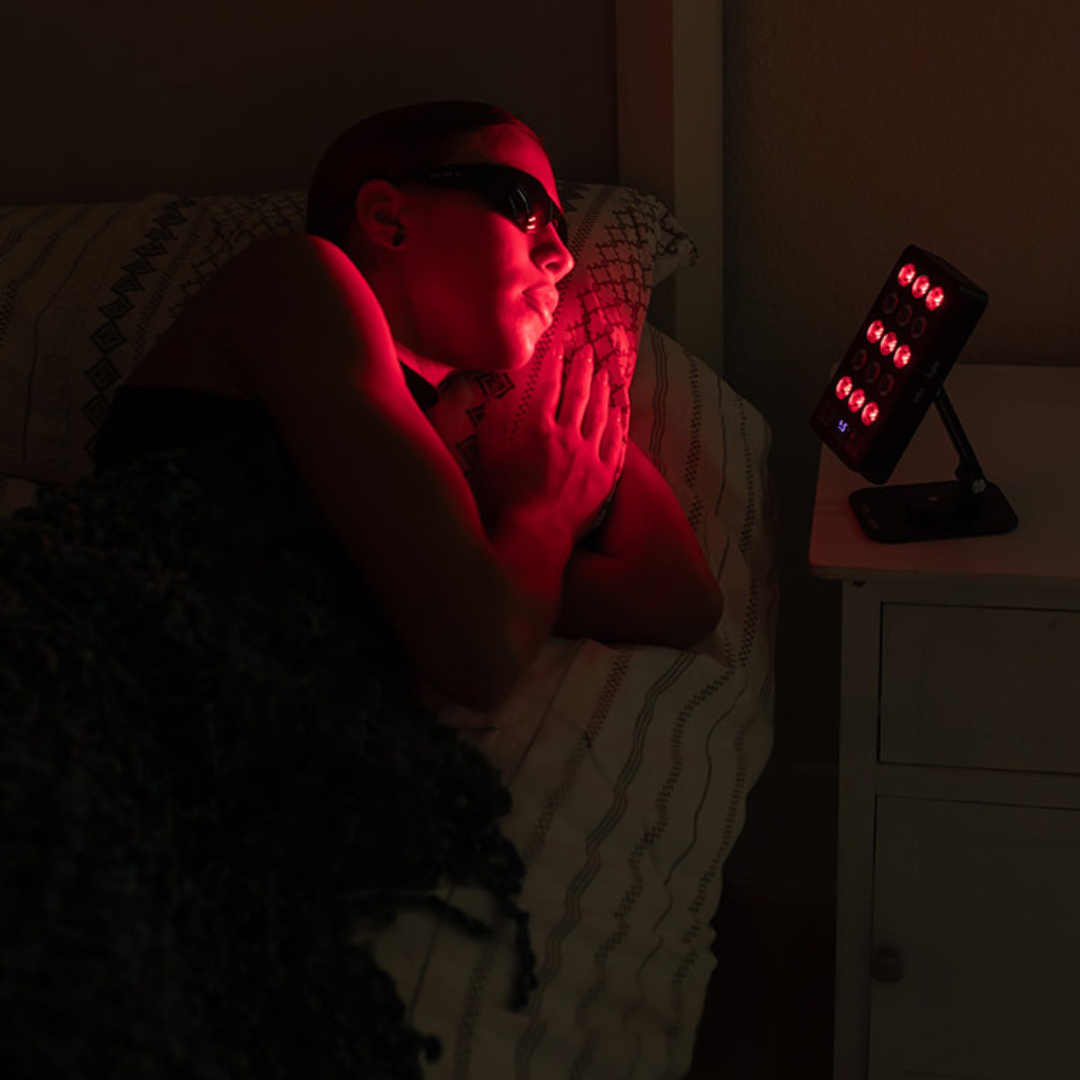![]() Free Shipping
Free Shipping ![]() Buy Now, Pay Later
Buy Now, Pay Later ![]() Eligible
Eligible
Red Light Therapy Contraindications: A Complete Safety Guide

Red Light Therapy (RLT), also known as photobiomodulation (PBM) or low-level laser therapy (LLLT), has surged in popularity for its wide-ranging benefits, from skin rejuvenation and wound healing to pain relief. While generally considered very safe for most people, it is not without its risks and specific situations where it should be avoided. Understanding red light therapy contraindications is crucial for ensuring a safe and effective experience.
This guide provides a detailed look at who should avoid RLT and the conditions that require medical consultation before use.
What Are Contraindications and Precautions?
Before diving in, it’s important to distinguish between two key terms:
- Contraindication: A specific situation, condition, or factor where a treatment is not advised due to the potential for harm. These are often absolute reasons to avoid the therapy.
- Precaution: A circumstance that warrants special care, consultation with a doctor, or adjusted treatment parameters. The therapy may still be used, but with increased vigilance.
Absolute Contraindications for Red Light Therapy
The following conditions are widely recognized as reasons to completely avoid red light therapy due to the potential for serious adverse effects.
Pregnancy
There is a lack of extensive clinical research on the effects of RLT on a developing fetus. As a precautionary principle, it is considered an absolute contraindication for use over the abdominal and pelvic regions during pregnancy. The potential risks, however theoretical, outweigh the benefits.
Expert Insight: “While red light therapy is non-ionizing and considered low-risk, we simply do not have enough data to declare it safe for the fetus. Erring on the side of caution is the standard medical advice for pregnant women.” – Dr. Sarah Jones, Dermatologist
Active Cancer or History of Cancer
This is one of the most critical contraindications. The primary concern is that red and near-infrared light, which work by stimulating cellular metabolism and energy production, could potentially stimulate the growth of pre-existing or undiagnosed cancerous or pre-cancerous cells.
- Active Cancer: RLT should not be applied directly over or near any known malignant tumors.
- History of Cancer: Individuals with a history of cancer, especially in the area to be treated, must consult their oncologist before using RLT.
Photosensitive Conditions and Medications
Certain conditions and medications can make the skin abnormally sensitive to light, leading to severe burns, rashes, or blistering.
- Conditions: Diseases like lupus, porphyria, and xeroderma pigmentosum.
- Medications: Common photosensitizing drugs include:
- Certain antibiotics (Tetracyclines, Ciprofloxacin)
- Some antidepressants
- Accutane (Isotretinoin) and other retinoids
- Certain diuretics and anti-inflammatories
Always check the side effects of your medications or consult your pharmacist.
Use Over the Thyroid Gland
The thyroid is a highly vascular and hormone-sensitive gland. While some studies are exploring the use of specific light wavelengths to support thyroid function, applying general RLT directly over the thyroid is not recommended without medical supervision. The potential to inadvertently affect hormone production is a risk.
Important Precautions and Relative Contraindications
For the following situations, red light therapy may still be an option, but it requires careful consideration and often, guidance from a healthcare professional.
Recent Surgery or Open Wounds
While RLT is excellent for wound healing, it should not be used on fresh surgical incisions or open wounds without a doctor’s approval. The initial inflammatory phase of healing is a natural and necessary process, and intervening too early could disrupt it.
Fever or Active Infection
If you have a fever or a systemic infection, it is best to postpone your RLT session. Adding a metabolic stimulus like light therapy could potentially exacerbate the fever or strain the body.
Medical Implants and Metal Hardware
Red and near-infrared light cannot penetrate deep through metal. If you have metal plates, pins, or joint replacements, the light will be reflected or blocked, making the therapy ineffective in that specific area. It is generally safe to use on other parts of the body.
Eye Safety and Seizure Disorders
- Eyes: Although many devices come with protective goggles, the long-term effects of intense red/NIR light on the retina are not fully known. Always use FDA-compliant eye protection.
- Epilepsy: In very rare cases, flickering light from certain LED devices can trigger a photoconvulsive response in individuals with photosensitive epilepsy.
Summary Table: Who Should Avoid Red Light Therapy?
| Condition / Situation | Recommendation | Reason |
|---|---|---|
| Pregnancy | Avoid (abdomen/pelvis) | Lack of safety data for the fetus. |
| Active Cancer | Avoid (near the tumor site) | Theoretical risk of stimulating cancer cell growth. |
| Photosensitizing Meds | Avoid / Consult Doctor | High risk of burns, blistering, and skin reactions. |
| History of Cancer | Consult Oncologist | Ensure no risk of stimulating dormant cells. |
| Thyroid Conditions | Avoid direct application | Potential to disrupt delicate hormone balance. |
| Recent Surgery | Consult Surgeon | Avoid disrupting the initial healing process. |
| Fever/Infection | Postpone Session | Avoid exacerbating the fever or straining the body. |
| Metal Implants | Ineffective on that area | Light cannot penetrate metal. |
The Golden Rule: Consult Your Healthcare Provider
The most important takeaway is to always consult with your doctor or a qualified healthcare professional before starting any new treatment, including red light therapy. This is especially crucial if you have a pre-existing medical condition or are taking any medications.
A medical professional can provide personalized advice based on your complete health history, ensuring that you can use red light therapy safely and effectively, or steer you toward a more appropriate alternative.
Disclaimer: This article is for informational purposes only and does not constitute medical advice. Always seek the advice of your physician or other qualified health provider with any questions you may have regarding a medical condition.






